-
About
- About Listly
- Community & Support
- Howto
- Chrome Extension
- Bookmarklet
- WordPress Plugin
- Listly Premium
- Privacy
- Terms
- DMCA Copyright
- © 2010-2025 Boomy Labs
 Scott Scanlon
Scott Scanlon
Listly by Scott Scanlon
The art of telling a story is a skill that if learned can be used not only in business but throughout your life. The books featured here are some of the top books on how to tell a story.
Note: this list is a mix between business storytelling, novel writing, and screenwriting. This mix is what I've found is the best way to build the skill and art of storytelling.
Source: http://www.youbrandinc.com/book-review/top-storytelling-books/
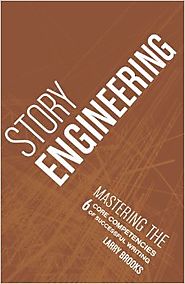
What makes a good story or a screenplay great? The vast majority of writers begin the storytelling process with only a partial understanding where to begin. Some labor their entire lives without ever learning that successful stories are as dependent upon good engineering as they are artistry. But the truth is...
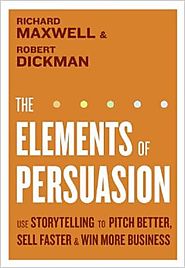
"Every great leader is a great storyteller," says Harvard University psychologist Howard Gardner.
According to master storytellers Richard Maxwell and Robert Dickman, storytelling is a lot like running. Everyone knows how to do it, but few of us ever break the four-minute mile. What separates the great runners from the rest? The greats know not only how to hit every stride, but how every muscle fits together in that stride so that no effort is wasted and their goals are achieved. World-class runners know how to run from the inside out. World-class leaders know how to tell a story from the inside out.
In The Elements of Persuasion, Maxwell and Dickman teach you how to tell stories too. They show you how storytelling relates to every industry and how anyone can benefit from its power.
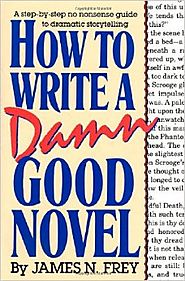
Written in a clear, crisp, accessible style, this book is perfect for beginners as well as professional writers who need a crash course in the down-to-earth basics of storytelling. Talent and inspiration can't be taught, but Frey does provide scores of helpful suggestions and sensible rules and principles.
An international bestseller, How to Write a Damn Good Novel will enable all writers to face that intimidating first page, keep them on track when they falter, and help them recognize, analyze, and correct the problems in their own work.
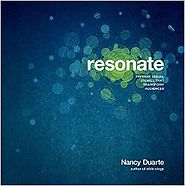
Presentations are meant to inform, inspire, and persuade audiences. So why then do so many audiences leave feeling like they've wasted their time? All too often, presentations don't resonate with the audience and move them to transformative action.
Just as the author's first book helped presenters become visual communicators, Resonate helps you make a strong connection with your audience and lead them to purposeful action. The author's approach is simple: building a presentation today is a bit like writing a documentary. Using this approach, you'll convey your content with passion, persuasion, and impact.
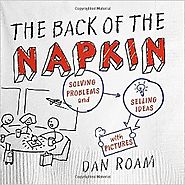
"There is no more powerful way to prove that we know something well than to draw a simple picture of it. And there is no more powerful way to see hidden solutions than to pick up a pen and draw out the pieces of our problem."
So writes Dan Roam in The Back of the Napkin, the international bestseller that proves that a simple drawing on a humble napkin can be more powerful than the slickest PowerPoint presentation. Drawing on twenty years of experience and the latest discoveries in vision science, Roam teaches readers how to clarify any problem or sell any idea using a simple set of tools.
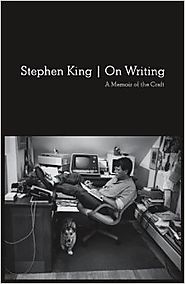
Immensely helpful and illuminating to any aspiring writer, this special edition of Stephen King’s critically lauded, million-copy bestseller shares the experiences, habits, and convictions that have shaped him and his work.
“Long live the King” hailed Entertainment Weekly upon publication of Stephen King’s On Writing. Part memoir, part master class by one of the bestselling authors of all time, this superb volume is a revealing and practical view of the writer’s craft, comprising the basic tools of the trade every writer must have. King’s advice is grounded in his vivid memories from childhood through his emergence as a writer, from his struggling early career to his widely reported, near-fatal accident in 1999—and how the inextricable link between writing and living spurred his recovery. Brilliantly structured, friendly and inspiring, On Writing will empower and entertain everyone who reads it—fans, writers, and anyone who loves a great story well told.

Robert McKee's screenwriting workshops have earned him an international reputation for inspiring novices, refining works in progress and putting major screenwriting careers back on track. Quincy Jones, Diane Keaton, Gloria Steinem, Julia Roberts, John Cleese and David Bowie are just a few of his celebrity alumni. Writers, producers, development executives and agents all flock to his lecture series, praising it as a mesmerizing and intense learning experience.
In Story, McKee expands on the concepts he teaches in his $450 seminars (considered a must by industry insiders), providing readers with the most comprehensive, integrated explanation of the craft of writing for the screen. No one better understands how all the elements of a screenplay fit together, and no one is better qualified to explain the "magic" of story construction and the relationship between structure and character than Robert McKee.
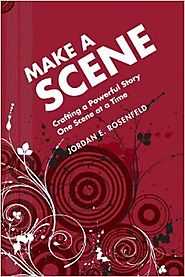
In Make a Scene, author Jordan E. Rosenfeld takes you through the fundamentals of strong scene construction and explains how other essential fiction-writing techniques, such as character, plot, and dramatic tension, must function within the framework of individual scenes in order to provide substance and structure to the overall story. You'll learn how to:
Craft an opening scene that hooks readers and foreshadows supporting scenes
Develop various scene types - from the suspenseful to the dramatic to the contemplative - that are distinct and layered
Tailor character and plot around specific scene types to better convey the nuances of your storyline
Create resonating climactic and final scenes that stay with readers long after they've finished your work
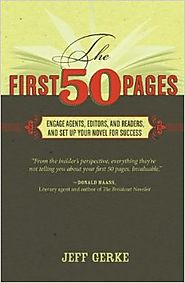
Whether you’re looking to get published or just hoping to hook your reader, first impressions are vital. Compelling opening scenes are the key to catching an agent or editor’s attention, and are crucial for keeping your reader engaged.
As a writer, what you do in your opening pages, and how you do it, is a matter that cannot be left to chance. The First 50 Pages is here to help you craft a strong beginning right from the start. You’ll learn how to:
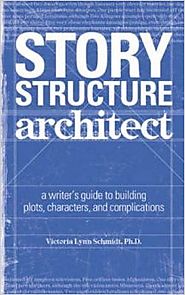
It's been said that there are no new ideas; but there are proven ideas that have worked again and again for all writers for hundreds of years.
Story Structure Architect is your comprehensive reference to the classic recurring story structures used by every great author throughout the ages. You'll find master models for characters, plots, and complication motifs, along with guidelines for combining them to create unique short stories, novels, scripts, or plays. You'll also learn how to:
Build compelling stories that don't get bogged down in the middle
Select character journeys and create conflicts
Devise subplots and plan dramatic situations
Develop the supporting characters you need to make your story work
Especially featured are the standard dramatic situations inspire by Georges Polti's well-known 19th century work, The Thirty-Six Dramatic Situations. But author Victoria Schmidt puts a 21st-century spin on these timeless classics and offers fifty-five situations to inspire your creativity and allow you even more writing freedom. Story Structure Architect will give you the mold and then help you break it.
This browsable and interactive book offers everything you need to craft a complete, original, and satisfying story sure to keep readers hooked!
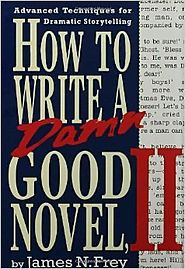
"Damn good" fiction is dramatic fiction, Frey insists, whether it is by Hemingway or Grisham, Le Carre or Ludlum, Austen or Dickens. Despite their differences, these authors' works share common elements: strong narrative lines, fascinating characters, steadily building conflicts, and satisfying conclusions. Frey's How to Write a Damn Good Novel is one of the most widely used guides ever published for aspiring authors. Here, in How to Write a Damn Good Novel, II, Frey offers powerful advanced techniques to build suspense, create fresher, more interesting characters, and achieve greater reader sympathy, empathy, and identification.
How to Write a Damn Good Novel, II also warns against the pseudo-rules often inflicted upon writers, rules such as "The author must always be invisible" and "You must stick to a single viewpoint in a scene," which cramp the imagination and deaden the narrative. Frey focuses instead on promises that the author makes to the reader―promises about character, narrative voice, story type, and so on, which must be kept if the reader is to be satisfied. This book is rich, instructive, honest, and often tellingly funny about the way writers sometimes fail their readers and themselves.
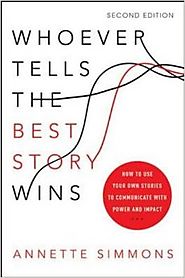
Stories have tremendous power. They can persuade, promote empathy, and provoke action. Better than any other communication tool, stories explain who you are, what you want...and why it matters. In presentations, department meetings, over lunch--any place you make a case for new customers, more business, or your next big idea--you'll have greater impact if you have a compelling story to relate. "Whoever Tells the Best Story Wins" will teach you to narrate personal experiences as well as borrowed stories in a way that demonstrates authenticity, builds emotional connections, inspires perseverance, and stimulates the imagination. Fully updated and more practical than ever, the second edition reveals how to use storytelling to: Capture attention - Motivate listeners - Gain trust -
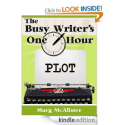
If you’re a busy writer who loves to write, but hates to plot… the One-Hour Plot System is just what you’ve been looking for!
Lots of people have great ideas for a book. They’re so excited that they just can’t wait to fire up the computer and start writing. Dizzying visions of being a popular author with fans lining up for the next book have them bashing out page after page… for a few days. Or maybe even a few weeks.
Then the harsh reality sets in. They take a day off writing The Novel, because they have come up blank. They can’t seem to work out what should happen next… maybe a night off will help?
The next day they still can’t think of what to do next, so they take another day off.
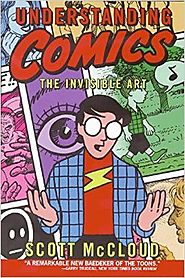
This is a rare and exciting work that ingeniously uses comics to examine the medium itself. McCloud (who wrote a comic-book series called Zot! ) conducts a genial, well-researched and funny tour of virtually every historical and perceptual aspect of comics, which he calls "sequential art," that is, art that consists of sequences of words and pictures. Beginning in the 11th century with the Bayeux tapestry, he examines pre-Columbian picture languages and the printing press, presenting a quick survey of the historical development of early sequential pictures into the specialized visual language of comics. But it's McCloud's accessible and quite amusing discussion of realism, abstraction and visual perception that forms the heart of this survey. He dissects the vocabulary of the medium, cheerfully analyzing the psychological power of comics and their central role in our ultra-visual culture. McCloud attempts to place comics within the tradition of serious western art. His black-and-white drawings are a delight, ranging from simplified cartoons to parodies of classic comics and fine art, all the while manifesting every theory and comics trend discussed.
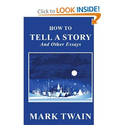
Mark Twain (1835 -1910) was an American author and humorist. He is noted for his novels Adventures of Huckleberry Finn (1885), called "the Great American Novel", and The Adventures of Tom Sawyer (1876). Twain grew up in Hannibal, Missouri, which would later provide the setting for Huckleberry Finn and Tom Sawyer.

Vivid and memorable characters aren't born: they have to be made
This book is a set of tools: literary crowbars, chisels, mallets, pliers and tongs. Use them to pry, chip, yank and sift good characters out of the place where they live in your imagination.
Award-winning author Orson Scott Card explains in depth the techniques of inventing, developing and presenting characters, plus handling viewpoint in novels and short stories. With specific examples, he spells out your narrative options—the choices you'll make in creating fictional people so "real" that readers will feel they know them like members of their own families.
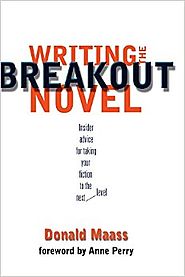
Take your fiction to the next level!
Maybe you're a first-time novelist looking for practical guidance. Maybe you've already been published, but your latest effort is stuck in mid-list limbo. Whatever the case may be, author and literary agent Donald Maass can show you how to take your prose to the next level and write a breakout novel - one that rises out of obscurity and hits the best-seller lists.
Maass details the elements that all breakout novels share - regardless of genre - then shows you writing techniques that can make your own books stand out and succeed in a crowded marketplace.
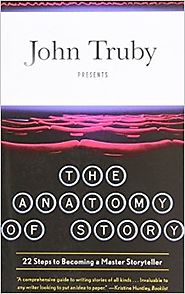
John Truby is one of the most respected and sought-after story consultants in the film industry, and his students have gone on to pen some of Hollywood's most successful films, including Sleepless in Seattle, Scream, and Shrek. The Anatomy of Story is his long-awaited first book, and it shares all his secrets for writing a compelling script. Based on the lessons in his award-winning class, Great Screenwriting, The Anatomy of Story draws on a broad range of philosophy and mythology, offering fresh techniques and insightful anecdotes alongside Truby's own unique approach to building an effective, multifaceted narrative.
Storytelling has come of age in the business world. Today, many of the most successful companies use storytelling as a leadership tool. At Nike, all senior executives are designated "corporate storytellers." 3M banned bullet points years ago and replaced them with a process of writing "strategic narratives." Procter & Gamble hired Hollywood directors to teach its executives storytelling techniques. Some forward-thinking business schools have even added storytelling courses to their management curriculum. The reason for this is simple: Stories have the ability to engage an audience the way logic and bullet points alone never could. Whether you are trying to communicate a vision, sell an idea, or inspire commitment, storytelling is a powerful business tool that can mean the difference between mediocre results and phenomenal success. "Lead with a Story" contains both ready-to-use stories and how-to guidance for readers looking to craft their own. Designed for a wide variety of business challenges, the book shows how narrative can help.
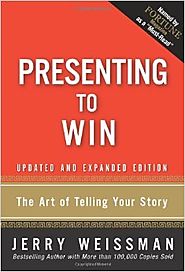
Thirty million presentations will be given today. Millions will fail. Millions more will be received with yawns. A rare few will establish the most profound connection, in which presenter and audience understand each other perfectly…discover common ground… and, together, decide to act.
In this fully updated edition, Jerry Weissman, the world’s #1 presentation consultant, shows how to connect with even the toughest, most high-level audiences...and move them to action! He teaches presenters of all kinds how to dump those PowerPoint templates once and for all and tell compelling stories that focus on what’s in it for the audience.
Weissman’s techniques have proven themselves with billions of dollars on the line. Thousands of his elite clients have already mastered them. Now it’s your turn!
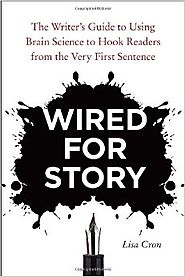
Imagine knowing what the brain craves from every tale it encounters, what fuels the success of any great story, and what keeps readers transfixed. Wired for Story reveals these cognitive secrets--and it's a game-changer for anyone who has ever set pen to paper.
The vast majority of writing advice focuses on "writing well" as if it were the same as telling a great story. This is exactly where many aspiring writers fail--they strive for beautiful metaphors, authentic dialogue, and interesting characters, losing sight of the one thing that every engaging story must do: ignite the brain's hardwired desire to learn what happens next. When writers tap into the evolutionary purpose of story and electrify our curiosity, it triggers a delicious dopamine rush that tells us to pay attention. Without it, even the most perfect prose won't hold anyone's interest.
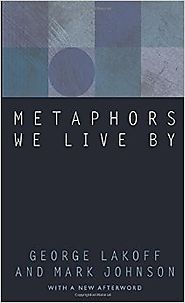
The now-classic Metaphors We Live By changed our understanding of metaphor and its role in language and the mind. Metaphor, the authors explain, is a fundamental mechanism of mind, one that allows us to use what we know about our physical and social experience to provide understanding of countless other subjects. Because such metaphors structure our most basic understandings of our experience, they are "metaphors we live by"—metaphors that can shape our perceptions and actions without our ever noticing them.
In this updated edition of Lakoff and Johnson's influential book, the authors supply an afterword surveying how their theory of metaphor has developed within the cognitive sciences to become central to the contemporary understanding of how we think and how we express our thoughts in language.
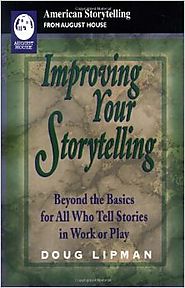
The first steps in storytelling are often easy, because we tell stories informally every day. Once you take storytelling into the more formal contexts of performance or occupational uses, however, you may be faced with challenges you hadn't anticipated. You need information that goes beyond the basics. And you need it in a form that does not just tell you what to do but helps you make your own informed decisions.

Master the Power of Story
When you consider the thousands of years of storytelling that comprise our literary tradition, it's easy to feel overwhelmed by the shadow of so many works. But there are common threads that link all stories--from "Beowulf" and "Hamlet" to "Gone With the Wind" and "The Godfather" to the story you're drafting right now in your head. These threads form the foundation that supports story--a foundation Nancy Lamb shows you how to access and master.

Hollywood's premier teacher of screenwriting shares the secrets of writing and selling successful screenplays
Anyone fortunate enough to win a seat in Professor Richard Walter's legendary class at UCLA film school can be confident their career has just taken a quantum leap forward. His students have written more than ten projects for Steven Spielberg alone, plus hundreds of other Hollywood blockbusters
